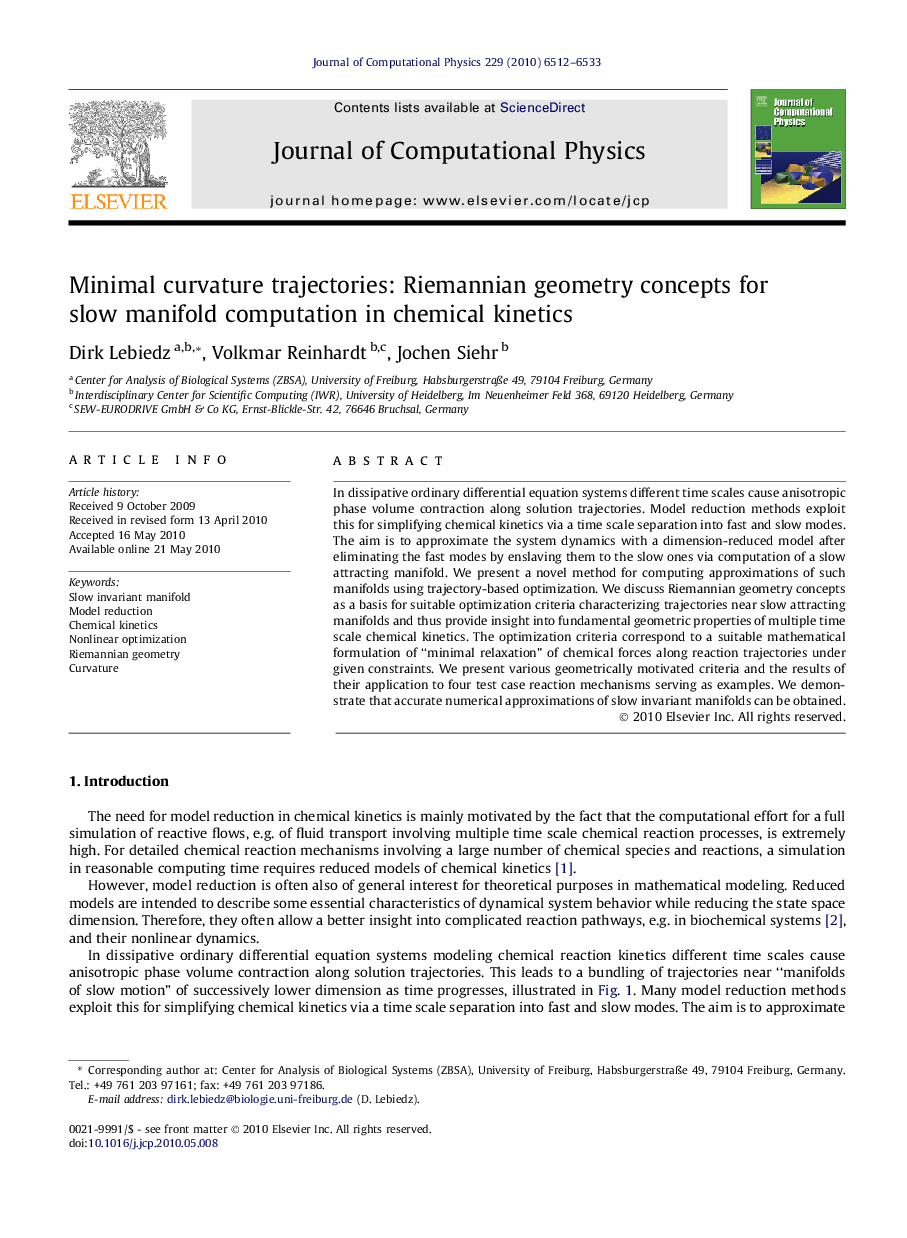| Article ID | Journal | Published Year | Pages | File Type |
|---|---|---|---|---|
| 519308 | Journal of Computational Physics | 2010 | 22 Pages |
In dissipative ordinary differential equation systems different time scales cause anisotropic phase volume contraction along solution trajectories. Model reduction methods exploit this for simplifying chemical kinetics via a time scale separation into fast and slow modes. The aim is to approximate the system dynamics with a dimension-reduced model after eliminating the fast modes by enslaving them to the slow ones via computation of a slow attracting manifold. We present a novel method for computing approximations of such manifolds using trajectory-based optimization. We discuss Riemannian geometry concepts as a basis for suitable optimization criteria characterizing trajectories near slow attracting manifolds and thus provide insight into fundamental geometric properties of multiple time scale chemical kinetics. The optimization criteria correspond to a suitable mathematical formulation of “minimal relaxation” of chemical forces along reaction trajectories under given constraints. We present various geometrically motivated criteria and the results of their application to four test case reaction mechanisms serving as examples. We demonstrate that accurate numerical approximations of slow invariant manifolds can be obtained.
Research Highlights► Extremum principle for trajectories near slow attracting manifolds. ► Allows formulation of optimization problem for computing slow manifolds. ► Efficient numerical solution of optimization problem possible. ► Curvature-based geometric criteria serve as optimization criteria. ► Geometric point of view shows analogy to fundamental curvature-force.
